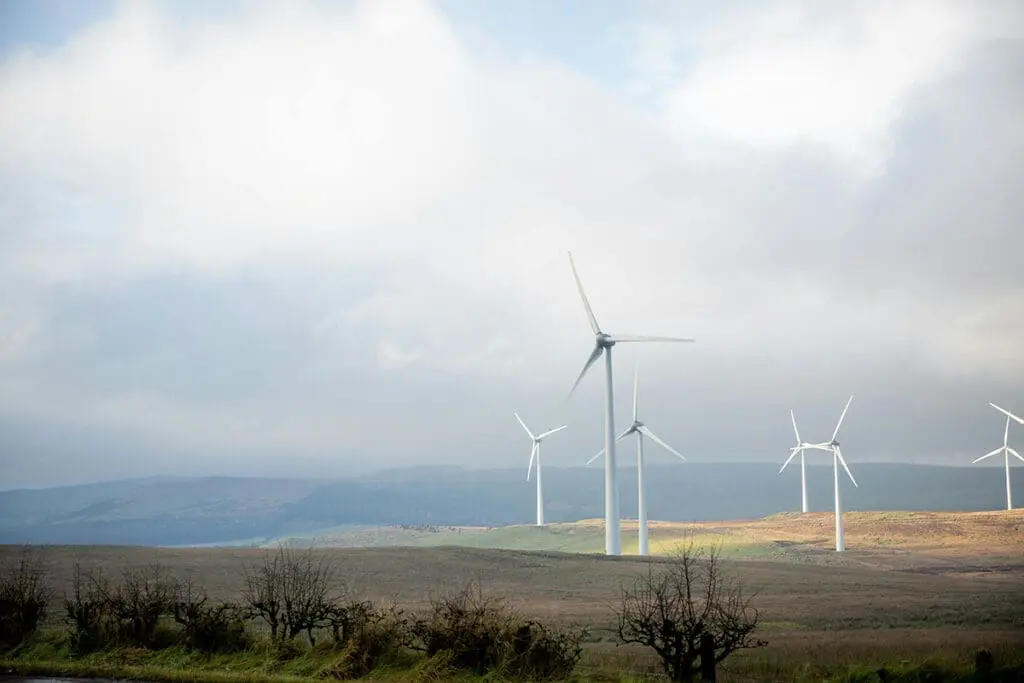
Ireland’s South Coast at the Forefront of Offshore Wind Progress As Ireland accelerates its transition to renewable energy, significant progress is being made on the groundwork necessary to bring offshore wind power to shore. This summer, surveys are beginning on beaches in Counties Cork and Wexford, marking a major milestone in EirGrid’s Powering Up Offshore […]
As Ireland accelerates its transition to renewable energy, significant progress is being made on the groundwork necessary to bring offshore wind power to shore. This summer, surveys are beginning on beaches in Counties Cork and Wexford, marking a major milestone in EirGrid’s Powering Up Offshore – South Coast project.
This initiative is central to Ireland’s efforts to meet its Climate Action Plan target of at least 5 GW of offshore wind energy by 2030 and achieving 80% renewable electricity on the grid.
Offshore wind energy is electricity generated by wind turbines located in bodies of water, usually in the ocean or large lakes, rather than on land. These turbines capture strong, consistent sea winds to generate renewable power, which is transmitted via subsea cables to the onshore electricity grid. Offshore wind is a key component of many countries’ clean energy strategies due to its high energy potential and lower visual and land-use impacts compared to onshore wind.
Ireland is exceptionally well-suited for offshore wind energy due to a combination of natural, geographic, and policy-related advantages:
Location: Ireland is on the western edge of Europe, directly facing the Atlantic Ocean. This gives it some of the strongest and most consistent wind speeds in Europe.
Wind Quality: Offshore winds are stronger and more stable than those on land, making energy generation more efficient and predictable.
Ireland has over 3,000 kilometres of coastline, providing ample space for offshore wind farms in both shallow and deeper waters, including the Irish Sea, Celtic Sea, and Atlantic Ocean.
Ireland currently imports much of its energy, especially fossil fuels. Offshore wind offers a chance to become more energy independent, reduce reliance on volatile global energy markets, and increase energy security.
Ireland’s Climate Action Plan targets 5 GW of offshore wind by 2030, with ambitions to reach up to 37 GW by 2050.
As an EU member, Ireland benefits from funding, regulatory frameworks, and infrastructure support for renewables.
Ireland can use offshore wind not only to power homes and businesses domestically, but potentially to export electricity to the UK and Europe, especially through future interconnectors like the Celtic Interconnector to France.
Offshore wind brings long-term economic benefits, including jobs in construction, engineering, maintenance, and marine services, particularly in coastal and rural areas.
EirGrid, the national grid operator, has commissioned marine and coastal surveys that will run through September 2025. The work, carried out by leading geo-data firm Fugro, involves geophysical, geotechnical, environmental, and metocean studies to assess seabed and soil conditions—essential to the design and delivery of the infrastructure that will connect offshore wind power to Ireland’s electricity network.
The surveys will take place in Maritime Area A—also known as Tonn Nua—as defined in the Irish Government’s South Coast Designated Maritime Area Plan (DMAP), as well as at key coastal ‘landfall’ sites where undersea cables may eventually come ashore.
These landfall locations include Ballycroneen and Ballycrenane beaches in County Cork and Carnivan, Long Gap, and Blackhall beaches in County Wexford. Importantly, the surveys are non-intrusive, ensuring that local ecosystems and public use of the beaches are minimally affected.
This phase of the project is not just technical—it’s also deeply community-oriented. EirGrid is actively engaging with local councils, landowners, and residents, recognising that the success of any major infrastructure project depends on local support and transparency.
‘These surveys are key for assessing seabed conditions, soil properties, and environmental impacts across the landfall, intertidal, nearshore, and offshore zones related to cable corridors for the project,’ said Liam Ryan, EirGrid’s Chief Transformation and Technology Officer. ‘The insights gained as a result of this work will play a key role in informing plans for the installation of the transmission infrastructure for offshore wind energy and will guide how EirGrid progresses the project in a way that is best for our marine ecosystem and local communities.’
Environmental sustainability is at the heart of this work. Understanding seabed composition and ecological characteristics will help design the most responsible path for cables and minimise disruption to marine habitats.
This isn’t just about preparing for offshore wind—it’s about preparing for Ireland’s energy future. As energy demand increases and Ireland seeks to end its reliance on imported fossil fuels, connecting offshore wind to the grid is essential.
But projects like Powering Up Offshore – South Coast are also about economic resilience and energy security. Offshore wind doesn’t just produce power—it powers long-term regional development, infrastructure investment, and skilled job creation in areas like marine surveying, engineering, and environmental science.
While there is natural concern about the potential impact on local beaches or coastal views, Ireland has a chance to lead globally in showing how offshore energy and community values can co-exist. Responsible planning, early consultation, and transparent communication are key pillars of that approach.
Though this project is national in scope, it touches directly on the lives of those along Ireland’s south and southeast coasts. Counties like Cork and Wexford are not just beautiful coastal areas—they are now frontlines in the energy transition.
If Ireland is to meet its climate commitments and ensure stable, affordable energy for future generations, grid infrastructure must evolve. The surveys now underway are the first physical step toward that evolution.
At All-Ireland Sustainability, we’re committed to building a greener, fairer island—together. Stay informed on the latest environmental initiatives, community action, and policy developments shaping sustainability across Ireland, North and South.
👉 Sign up for our newsletter today and be the first to hear about upcoming events, expert insights, and ways to get involved.
Whether you’re a seasoned advocate or just starting your journey, new members are always welcome—your voice matters.
Subscribe now and be part of the All-Ireland Sustainability network.